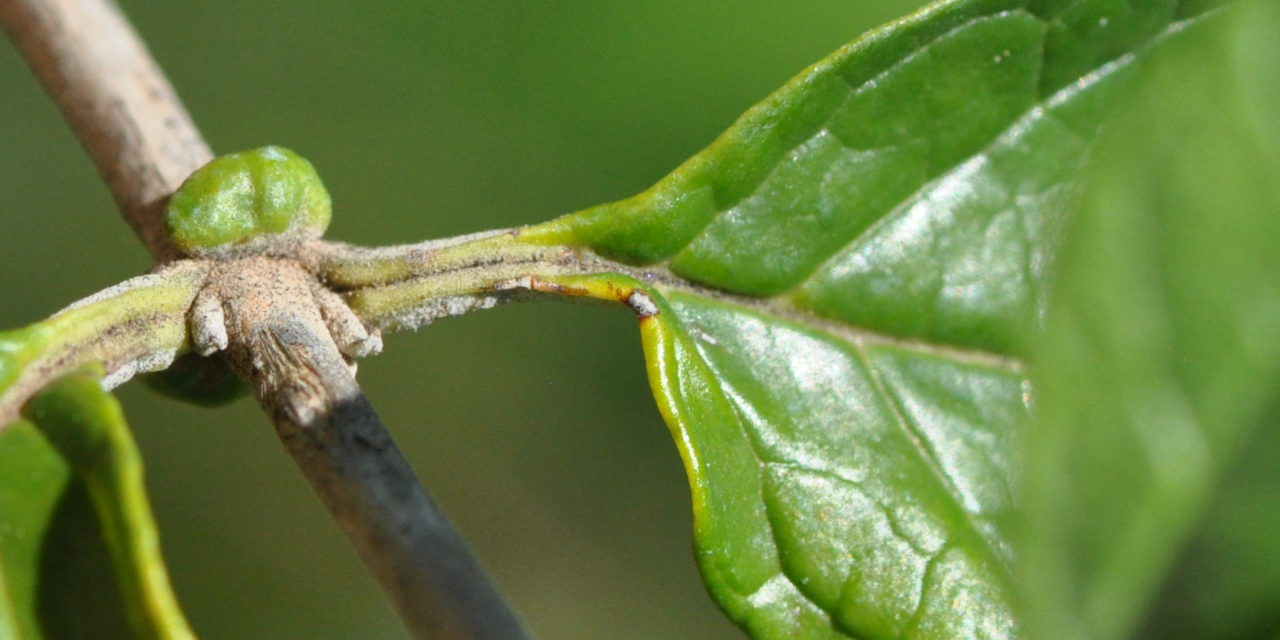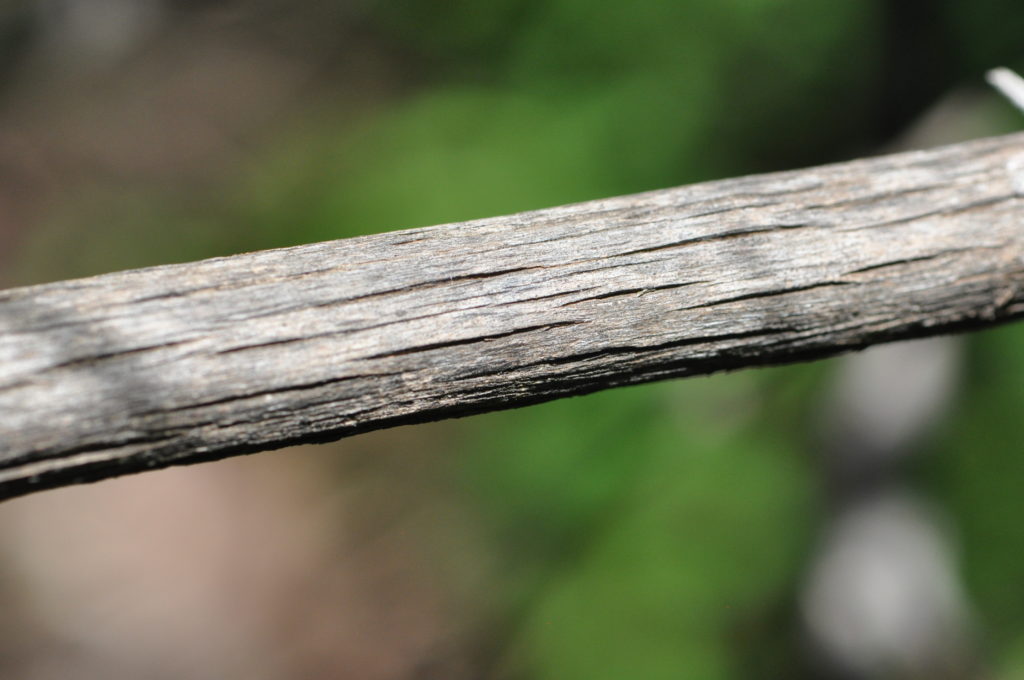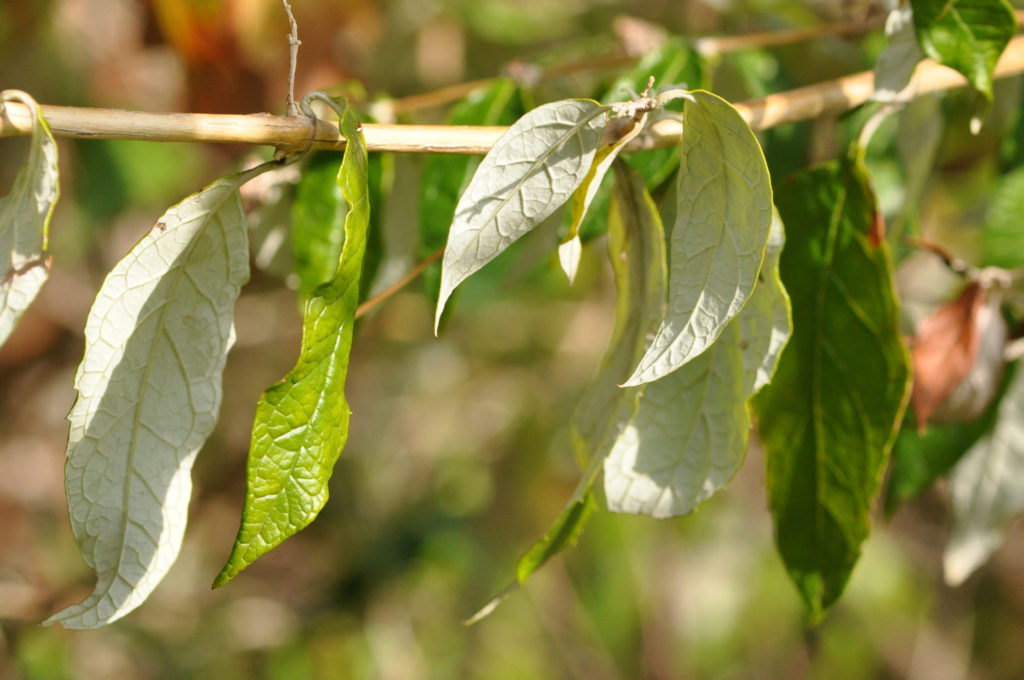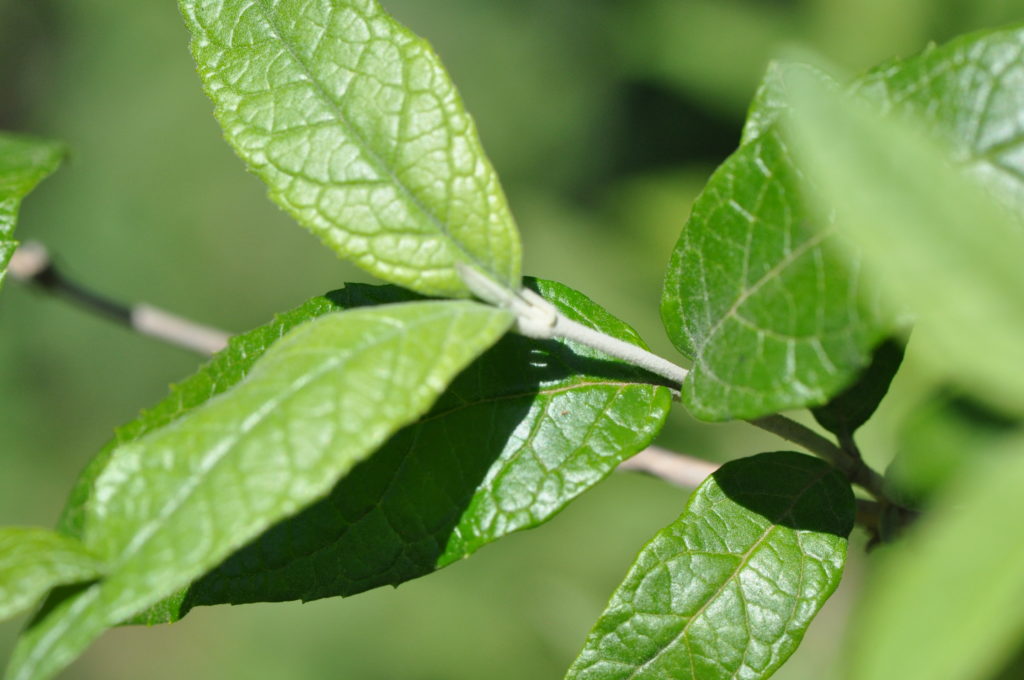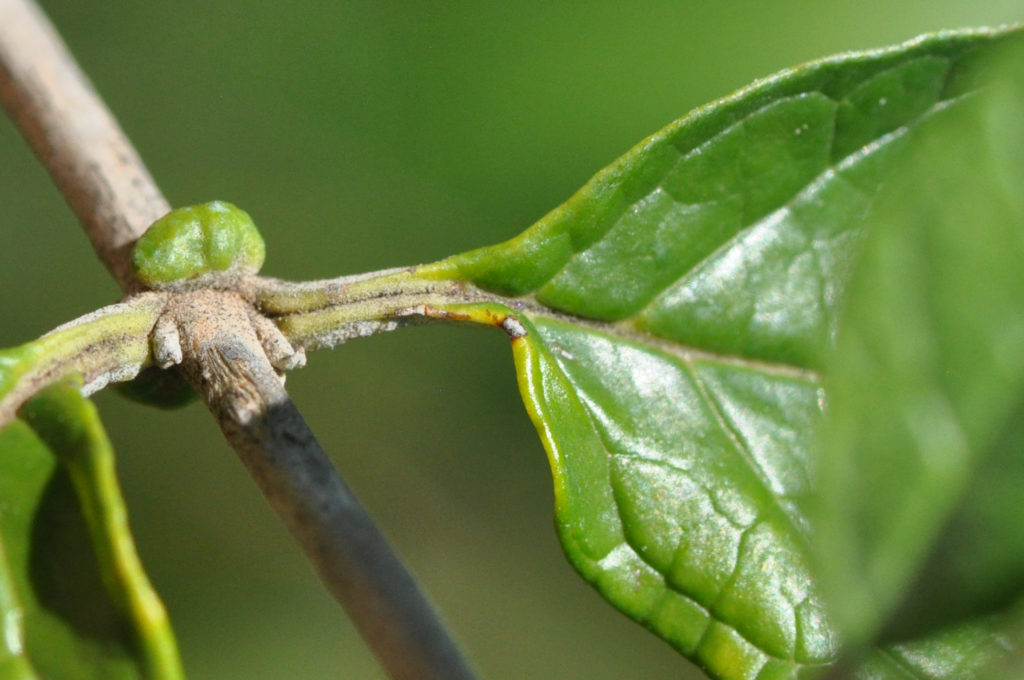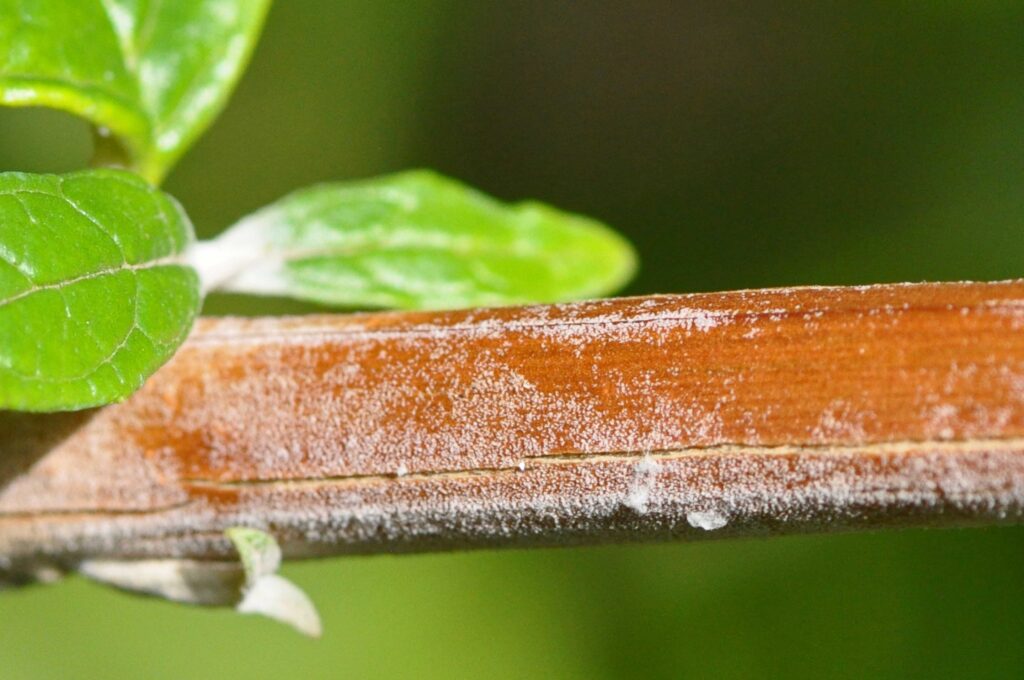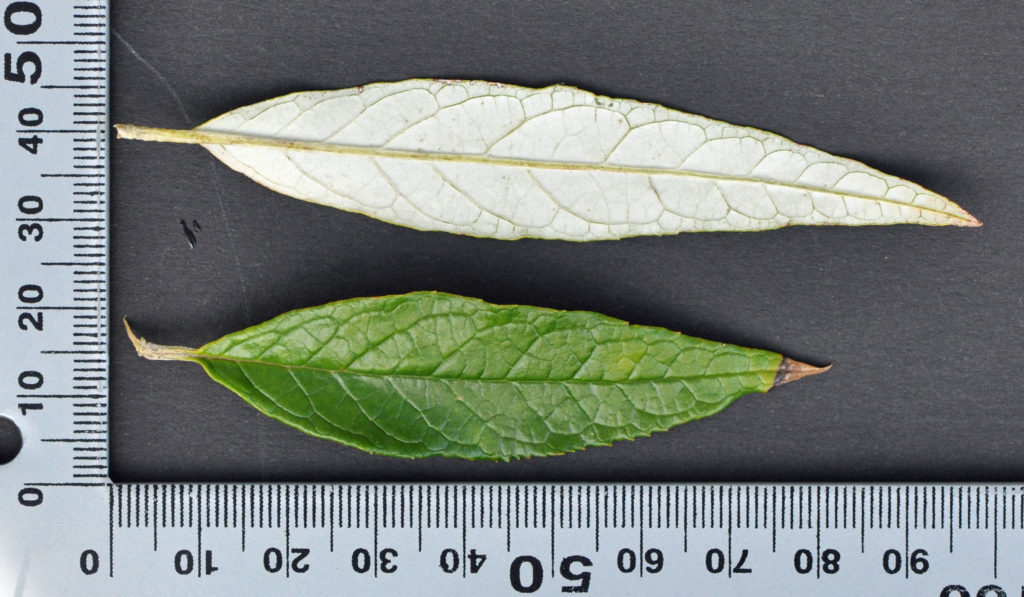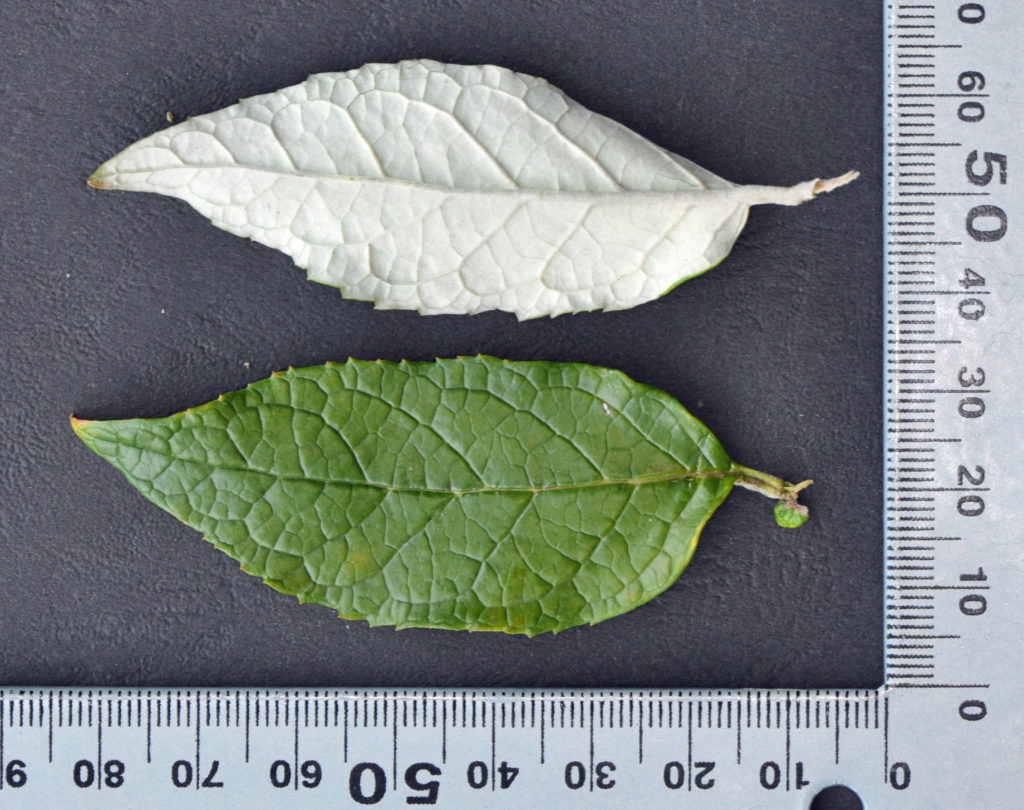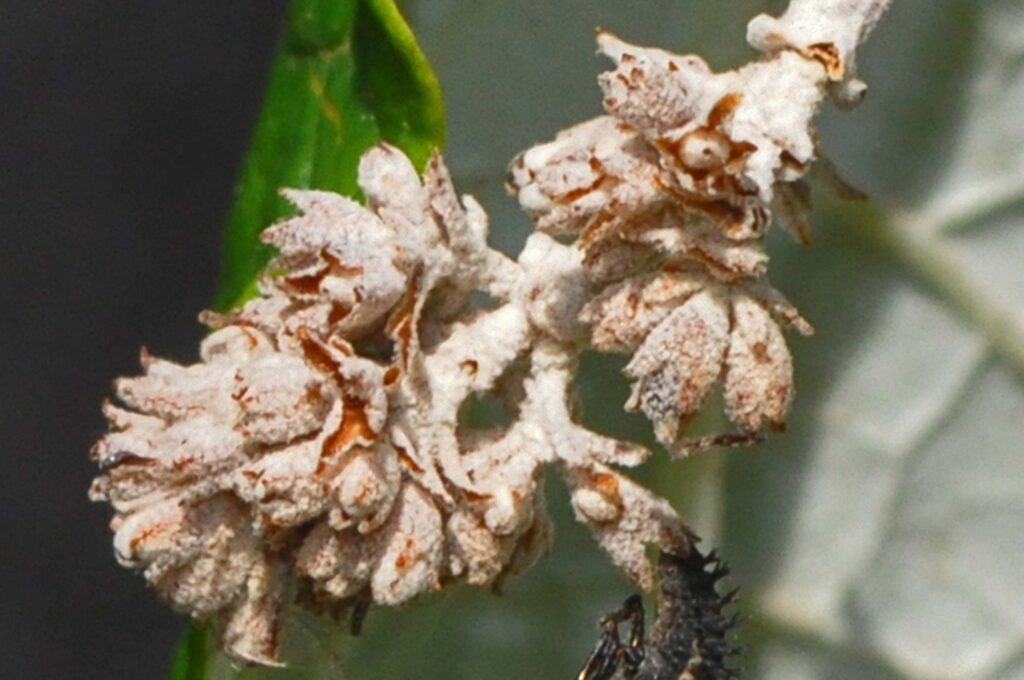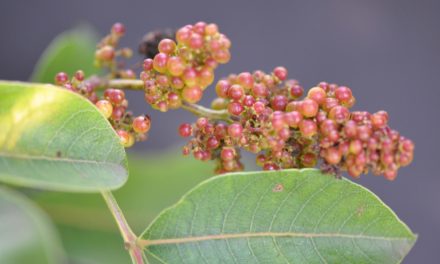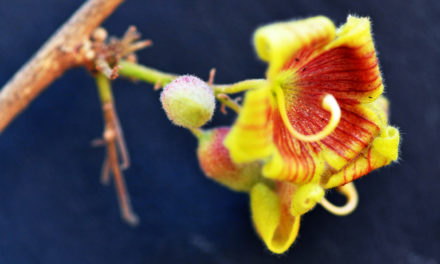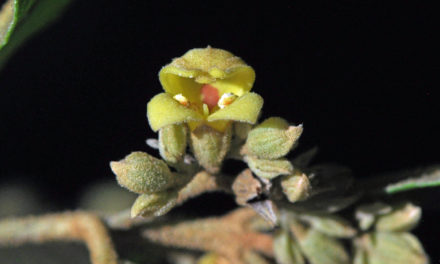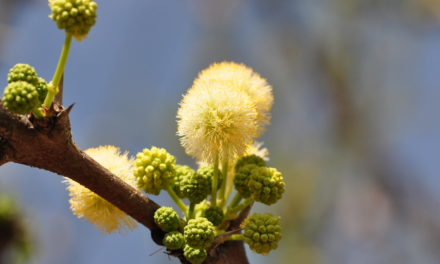General Info – summary.
This Tree is up to 7m high or remains a multi-stemmed shrub. The whitish young stems bark becomes rough and stringy. Simple, decussate Leaves are lanceolate and discolorous. The small, 4-merous Flowers are, bisexual, regular with epipetalous stamens and a single pistil with a single style. The creamy brown Fruit with a persistent calyx is a lobed terminal capsule housing oblong, compressed seeds.
Description
Buddleja auriculate
Previous Names: Buddleia auriculata.
SA Tree No. 636.5.
Common names: (Afr) Treursaliehout. (Eng) Weeping Sage, Winter Wild Buddleia, Weeping Sagewood. (isiXhosa) Utile.
Family: Scrophulariaceae: (figwort family). The simple Leaves lack stipules and are usually opposite and/or alternate. The bisexual Flowers are usually zygomorphic (irregular flower: when corolla is divisible into 2 equal halves in one plane only). The calyx is 4-5 lobed and there are tubular corollas with 2 lips. Usually 4 stamens are present and are usually didynamous (2 long and 2 short). The superior ovary is usually bilocular and contains many ovules. The style is terminal, simple and the stigma is entire or has 2-3 lobes. The Fruit is usually a capsule. There are usually 1 to many Seeds per locule. In this family, there are about 65 genera and more than 1 600 species. In southern Africa, the genera with trees included on this website are Buddleja, Dermatobotrys and Freylinia.
Name derivation: Buddleja named to recognise Rev Adam Buddle 1660-1715. He was an English botanist who trained at Cambridge University. His herbarium formed part of the foundation collections of the British museum. auriculata: ear-shaped. This refers to the shape of the stipules. There are 7 species of the genus Buddleja in southern Africa.
Conservation: National Status: L C. Least concern. Assessment: 2005 (W. Foden and L. Potter).
Tree
This small Tree is up to 7m high, or it may be a multi-stemmed, scrambling shrub. The woody, arching and slender branches tend to hang down – often trailing. The light brown Bark becomes rough and stringy with age (photo 104). Young stems are round or 4-angled (photo 394 – under Leaves). They emerge from leaf axils and are covered with whitish grey hair (photo 107 under Leaves). They become long, slender and may be brown/red (photo 394 – under Leaves).
- 104 2014/12/02 Walter Sisulu NBG. Photo: David Becking.
Leaves
The mainly lanceolate or oblong Leaves (photo 389) are opposite, or nearly so. The drooping pairs of leaves are simple (have a single blade, which may have incisions that are not deep enough to divide the leaf into leaflets). The thin leaves are up to 12 x 5cm and decussate (opposite pairs of leaves have successive pairs at right angles to each other – photos 391 & 107) and rest on the usually square young stems (photo 394). The upper surface is smooth – not wrinkled, medium to dark green and glossy with clearly visible sunken midrib and lateral veins (photo 110). The lower surface is whitish – covered with white to grey hairs and has a protruding midrib and lateral veins (photo 110). The leaf is thus discolorous (having upper and lower surfaces of leaves different colours). Apex tapers to a narrow point and the Base is broadly tapering to rounded. The rolled under Margin is usually finely toothed (photo 110) or scalloped and may be entire (with a continuous margin, not in any way indented). The hairy Petiole (leaf stalk) is up to 1cm long and grooved on the upper side (photo 109). The large Stipules (basal appendage of the petiole) are green, short lasting, leaf-like or reduced to a line. They grow on a ridge between the opposite leaves and may be ear-shaped (hence, the species name – photo 109).
- 391 2014/10/28 Walter Sisulu NBG. Photo: David Becking.
- 107 2014/12/02 Walter Sisulu NBG. Photo: David Becking.
- 109 2014/12/02 Walter Sisulu NBG. Photo: David Becking. With Stipule.
- 394 2014/10./28 Walter Sisulu NBG. Photo: David Becking.
- 389 2014/10/28 Walter Sisulu NBG. Photo: David Becking.
- 110 2014/12/02 Walter Sisulu NBG. Photo: David Becking.
Flowers
The small (up to 7mm long), strongly sweetly scented, bisexual Flowers are actinomorphic (Regular, symmetrical. Flowers are vertically divisible into similar halves by more than 1 plane passing through the axis). The attractive, trumpet-shaped, cream, orange or lilac flowers occur in axillary sprays or at branch ends in up to 4cm long Panicles (indeterminate, branched inflorescence with stalked flowers). The Calyx is pubescent (with dense fine, short, soft hairs, downy) on the outside only. The cream or orange throat of the 4-lobed Corolla has a tubular base and is cream, orange yellow, lavender, lilac, flesh or salmon coloured. The lobes are erect and up to 5 times as long as the calyx. Once the flower is open, these lobes become recurved or reflexed. The 4 Stamens are epipetalous (arising from the petals) and do not protrude beyond the corolla tube. They alternate with the corolla lobes. The Filaments are connate (united or joined). The non-protruding Anthers have parallel Theca (pollen sacs) that have longitudinal slits and are basifixed. There is a single Pistil (a unit of the Gynoecium, the female element of the flower, composed of the Ovary, Style and Stigma). The superior Ovary is pubescent (with dense fine, short, soft hairs: downy). It is 2-locular and has a single style. (Apr-Aug).
Fruit
The creamy brown dehiscent Fruit is a small, 2-lobed terminal Capsule (a dry fruit resulting from the maturing of a compound ovary which usually opens at maturity by one or more lines of dehiscence) that may be smooth or hairy. It is up to 6 x 2,5mm, protruding for about half its length beyond the persistent Calyx lobes (photo 390). The capsule splits longitudinally from the apex into 2-4 valves (the units or pieces into which a capsule splits or divides in dehiscing). The many Seeds have endosperm (the starch and oil-containing tissue of many seeds; often referred to as the albumen). (Jun-Oct).
- 390 2014/10/28 Walter Sisulu NBG. Photo: David Becking.
Distribution & Ecology
This plant is semi scandent (climbing without the aid of tendrils) and located in Eastern Cape e.g., the densely forested Amatola mountains, KwaZulu-Natal, Limpopo and Mpumalanga. It is also found in Zimbabwe, Mozambique (central – away from the coast) and Swaziland. It is thus endemic (restricted to a particular geographic location) in southern Africa. This plant was accorded the Royal Horticultural Society Award of Merit in 1923. Plants grow on forest margins, along streams and rocky slopes at reasonable altitudes from 600 to 2 000m. They also found in mist belts and can withstand temperatures from -5°C to nearly 40°C and are drought resistant. The sweet-scented flowers attract sunbirds and insects. These insects attract birds like the Cape robin-chat (Cossypha caffra) and Southern Boubou (Laniarius ferrugineus).
Ethnobotany
The plant grows well from hard woodcuttings. It is not fussy about the soil type and is suitable for a large sunny garden. This is a special, impressive garden shrub or small tree and is able to withstand clipping.
References
Boon, R. 2010. Pooley’s Trees of eastern South Africa. Flora and Fauna Publications Trust, Durban.
Coates Palgrave, M. 2002. Keith Coates Palgrave Trees of Southern Africa, edn 3. Struik, Cape Town.
Foden, W. & Potter, L. 2005. Buddleja auriculata Benth. National Assessment: Red List of South African Plants version 2020.1. Accessed on 2021/12/07.
Ginn, P.J. McIlleron, W.G. Milstein, S. 1989. The Complete Book of Southern African Birds. Struik Publishers (PTY) LTD. Third impression 1991.
Palmer, E. & Pitman, N. 1972. Trees of southern Africa, Balkema, Amsterdam, Cape Town.
Schmidt, S. Lotter, M. & McCleland, W. 2002. Trees and Shrubs of Mpumalanga and the Kruger National Park.
Andrew Hankey: Help with ID.
http://www.plantzafrica.com/plantab/buddlejauricul.htm
https://en.wikipedia.org/wiki/Buddleja_auriculata
http://pza.sanbi.org/buddleja-auriculata
http://posa.sanbi.org/flora/browse.php?src=SP
https://plants.jstor.org/stable/10.5555/al.ap.person.bm000392460
https://avibase.bsc-eoc.org/species.jsp?avibaseid=A38BABE18155945C
https://en.wikipedia.org/wiki/Laniarius_ferrugineus.

